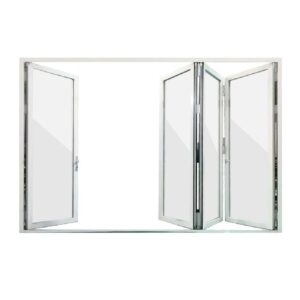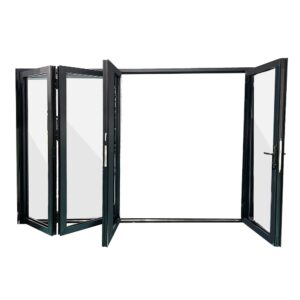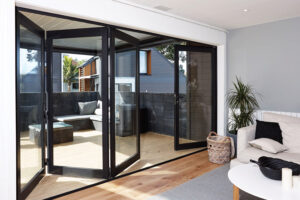Bifold doors are a stylish and practical addition to any home. They maximize space, create a seamless connection between rooms, and allow natural light to flow through your interiors.
However, the success of your installation depends heavily on one crucial step: accurate measurement. Even the highest-quality doors will not perform well if they are ordered in the wrong size.
Measuring for bifold doors is not complicated, but it does require care and attention to detail.
With the right tools, a systematic approach, and an understanding of common pitfalls, you can take precise measurements that ensure your doors fit and function perfectly.
This guide will walk you through the process, highlight common mistakes to avoid, and provide tips for choosing and maintaining bifold doors.

Tools You Will Need
Before you begin, gather the following essentials:
-
A reliable tape measure
-
A pencil for marking points and making notes
-
A notepad or measuring sheet for recording results
-
A spirit level for checking plumb and level
-
A step ladder if you are measuring tall openings
Tip: Drawing a simple sketch of the opening and labeling each measurement can help you keep track and avoid confusion later.
Step 1: Measure the Width
Always measure the width of the opening in three places—the top, middle, and bottom. This is important because walls, frames, and floors are rarely perfectly straight.
-
Top Width: Measure side to side at the top of the opening. Write it down.
-
Middle Width: Measure across the center of the opening. Record it.
-
Bottom Width: Measure side to side at the floor level. Note it.
-
Choose the Smallest: Out of the three, use the smallest measurement. This ensures that the doors will fit comfortably, even if parts of the opening are narrower.
Step 2: Measure the Height
Just like with width, measure the height at three points—the left side, center, and right side of the opening.
-
Left Height: From finished floor to the underside of the head.
-
Center Height: From floor to head at the midpoint.
-
Right Height: From floor to head on the right side.
-
Choose the Smallest: Again, take the smallest of the three. This prevents issues if the floor is uneven or slopes slightly.
If you plan to install new flooring after the doors, remember to account for the thickness of the material. Tile, carpet, or wood flooring can raise the floor level and reduce clearance, potentially causing the doors to scrape.
Step 3: Check for Square, Level, and Plumb
Accurate openings are essential for smooth operation.
-
Level: Use a spirit level along the head (top) of the opening. If it is not level, note the difference.
-
Plumb: Place the level vertically along both side jambs to confirm they are upright.
-
Square: Measure both diagonals of the opening, corner to corner. If the diagonals are equal, the frame is square. If they differ, you may need to use shims or make adjustments during installation.
Step 4: Consider Hardware and Clearances
Bifold doors require room not only for the panels themselves but also for hardware, handles, and stacking space.
-
Track space: Ensure the head has sufficient clearance for the track.
-
Handle clearance: Handles should not strike nearby walls, trim, or furniture.
-
Stacking space: When folded open, the panels will stack to one or both sides. Check that nearby walls, pipes, or radiators do not block this movement.
-
Threshold: Decide whether you want a flush threshold (common indoors) or a weathered threshold (common for exterior installations).
Step 5: Measuring for a New Frame
If you are installing a new frame along with your bifold doors, you will need additional measurements:
-
Wall thickness: Measure the depth of the wall to ensure the jamb fits flush with the interior surface.
-
Sill choice: Note whether you need a flush interior sill or a weathered exterior sill.
-
Trim allowance: Factor in interior or exterior trims that will cover the frame edges.
Additional Measuring Tips
-
Double-check everything. Always confirm your numbers by measuring twice.
-
Take notes of irregularities. If a wall is bowed or the floor slopes, note it down before ordering.
-
Manufacturer guidelines. Different suppliers may require slight variations in how to measure, so always confirm their specifications before finalizing your order.
Common Measuring Mistakes to Avoid
-
Only measuring once: Openings can vary at different points, so one measurement is not enough.
-
Ignoring diagonal checks: Skipping diagonals means you may miss an out-of-square opening.
-
Forgetting the frame size: When replacing doors, frames reduce the clear opening width and height. Always account for them.
-
Overlooking flooring changes: New flooring can alter the clearance. Always include future flooring thickness in your measurements.
-
Not checking obstructions: Light switches, skirting boards, or heating units may interfere with stacked panels.
Choosing the Right Bifold Doors for Your Space
Beyond measurements, selecting suitable bifold doors is also key.
-
Panel layout: Larger openings may accommodate more panels, while smaller spaces may look best with fewer.
-
Material: Timber provides warmth and a traditional look, while aluminum offers modern lines and durability.
-
Finish: Choose a finish that complements your room, such as matte, gloss, or textured surfaces.
-
Glass options: Clear glass maximizes light, frosted glass offers privacy, and double glazing improves energy efficiency.
Maintaining Bifold Doors After Installation

Proper maintenance ensures long-term performance.
-
Clean the tracks: Dust and debris build up quickly. Use a vacuum or brush, and wipe with mild soapy water.
-
Lubricate hardware: Apply silicone-based lubricant to hinges and tracks every six months to prevent stiffness and noise.
-
Inspect regularly: Check for loose screws, misaligned panels, or worn seals. Early repairs prevent bigger issues later.
Final Thoughts
Measuring for bifold patio doors is not difficult, but it requires patience and accuracy.
By carefully following the steps—measuring width and height in three places, checking for square, allowing space for hardware, and accounting for flooring—you will avoid costly mistakes and ensure your doors fit perfectly.
Remember, accurate measurements are the foundation of a successful installation. Take your time, measure twice, and consult the manufacturer’s guidance before placing an order.
With careful preparation, your bifold doors will not only fit but also enhance your home with beauty, light, and functionality.
FAQs: How to Measure for Bifold Doors
How do I measure for bifold doors?
To measure for bifold doors, first determine the width and height of the opening. Measure the width at three points: the top, middle, and bottom. Use the smallest measurement as your width. Measure the height from the floor to the top of the opening on both sides and in the center. Use the smallest measurement as your height.
What is the proper way to measure for bifold closet doors?
For bifold closet doors, measure the width and height of the closet opening. Measure the width in three places: across the top, middle, and bottom of the opening. Record the smallest measurement. Measure the height from the floor to the top of the opening on both sides and in the middle. Use the smallest height measurement.
How do I measure the opening for bifold doors?
To measure the opening for bifold doors, take three width measurements: at the top, middle, and bottom of the door frame. Use the smallest measurement as your width. Measure the height on both sides and in the center of the opening. Use the smallest height measurement.
What tools do I need to measure for bifold doors?
You will need a tape measure, a level, and a notepad to record your measurements. It’s also helpful to have a pencil and paper to draw a rough sketch of the opening with your measurements.
Are there any tips for ensuring accurate measurements for bifold doors?
Ensure the tape measure is straight and level when taking measurements. Measure each dimension at least twice to confirm accuracy. Note any irregularities in the opening, such as out-of-square corners or uneven floors, and adjust your measurements accordingly.









